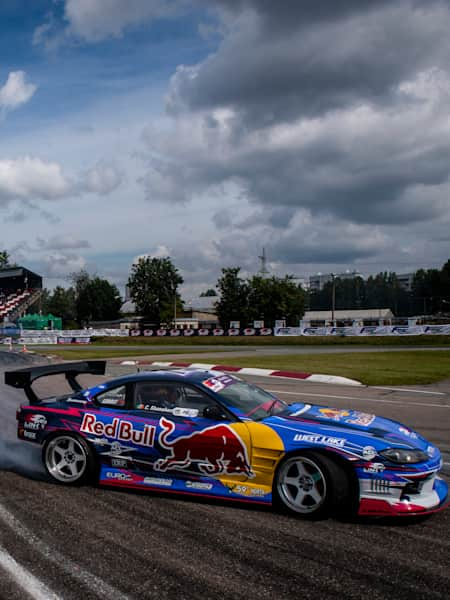Yes, the fastest-growing motorsport worldwide is drifting. What can we make of this besides saying that we really like watching professional drivers push past the limits of their car while keeping complete control over its handling.
It is fair to say that we just think there is something special about drifting that keeps us coming back. Maybe it's the simple elegance of seeing a car stream down a lane sideways, or the appreciation of the expertise and balanced dance between car, driver, and road, but either way, we love to see the professionals hit those turns or run a drift course.
A lot of factors go into drifting properly. The motorsport athletes take into account every possible factor of their car, along with the physics (you guessed it, mad science is involved), and the area where the drift will take place, then practice along with their team to improve their turn angles, and anticipate the subjective judging that is involved in drifting events.
Here’s a few FAQs to get you started on your journey.
01
Is drifting really fast?
That depends. Around a corner it is not the fastest way, as a straight line will propel you faster, since there are no interruptions, but drifting can be as fast as around a corner as driving around a corner in a traditional way.
If we consider it differently, since you can drift driving at higher speeds, we can say that yes, drifting is really fast. A professional can push a vehicle to its limits, since they have a comprehensive understanding of their vehicle, its safest possible top speed for a successful drift, and can complete their drift under optimal conditions.
Relive the best moments of the most entertaining season of the Drift Masters European Championship to date.

02
Can you drift with an automatic car?
Yes. Any car can drift, as long as the physical needs are met. The driver must put the car in a state where the wheels turn faster than the traction can keep up, thus propelling the car sideways. After that, it is about skill and control.
03
What is the purpose of drifting?
The purpose of drifting, and especially professional drifting by motorsport athletes, is to successfully complete a drift course or race while being judged point-by-point on the quality of their drifting skills. Generally speaking, the purpose of drifting is for the driver to make the car spin sideways, intentionally causing the car to oversteer, in order to achieve a drift state.
04
What is the best car for drifting?
Any car can be used to implement a drift, but professionals will either use cars that have a history of good drifting attributes (with rear-wheel or 4-wheel drive), or use a local model that they understand and are comfortable with. Nearly all drifting cars have a low center of gravity, so they can pull off their drifts at higher speeds and with more velocity around the turn.
05
What is a drift event?
A drift event is any motorsport event where the main attraction is drift competitions. Usually this is to mean either drift racing or a drift course competition.
Drifting is precision work on the highest level. Watch the Red Bull Car Park Drift Belfast recap video to see mind-blowing driving manoeuvres!

06
What is drift racing?
Drift racing is a motorsport event where the athletes are judged by the quality of their drifts, including but not limited to the angles that they approach the turns (driving line), the continuity of their drifts (driving line, speed, and drift angle), the proximity to the lines (drift angle and execution), and their overall technique (execution).
07
How does drifting work?
Drifting works by intentionally putting a car in an oversteer state, where it overcomes the natural traction between the wheels and the road. The driver then controls this state, forcing the car to continue drifting until the turn is complete.
08
Why is drifting so popular?
Drifting started in Japan in the 1970s, and has slowly gained in popularity over time. It used to be considered a niche sport, but as time has passed and more people have learned about it, its popularity has grown. It started to become popular outside of Japan in the 1990s, and now it has become a global sport.
People who enjoy watching drift racing say that they watch it because of the beauty of the drift, the stunning display of driver and machine, and also because they like to see the tires smoke, which is a big part of drifting.







